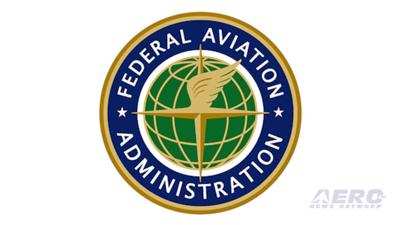A Tale of Two Ethea
The FAA Reauthorization Act ratified by the U.S. House of Representatives includes an amendment permitting Transport Category Aircraft operating under Part 121 of the Federal Aviation Regulations to continue flying with compulsory safety-upgrades only partially completed.

Moreover, the legislation allows the Federal Aviation Administration to approve interim aircraft design changes in the absence of public input pertaining thereto.
The provisions were lobbied for by Boeing and other aircraft OEMs.
By way of safeguard, the antecedent amendment requires the FAA to set deadlines “by which all noncompliant conditions related to the design change must be addressed."
Aerospace industry officials supportive of the amendment allege the alacritous development and implementation of aircraft safety upgrades benefit public safety. Critics of the measure, however, argue haste makes waste in the sense that fast-tracked deployment and approval of aircraft components, systems, or features stands to degrade the level of engineering and regulatory scrutiny historically afforded such undertakings.
A trenchant critic of Boeing’s safety culture since the 2019 death of his 24-year-old daughter, Samya Rose Stumo—a passenger aboard the 737 MAX-8 then operating as Ethiopian Airlines Flight 302—Michael Stumo set forth the proposed approval process lacks transparency and invites abuse.
Mr. Stumo stated: "The exclusive reason for this is to avoid the public and anyone else having a say or seeing what's going on. They just want to make it secret."
While the proposed fast-track process may occasion near-term safety enhancements, concerns persist that it will, in fact, allow Boeing to delay costly longer-term upgrades essential to the regulatory compliance of the company’s aircraft.
Former FAA safety engineer Mike Dostert, who provided analysis of the proposed amendment to Congressional staff, opined the abbreviated approval process detailed in the FAA bill "is not about safety; it's about reducing costs."
Endeavoring to assuage concerns raised by such, House Transportation Committee staff salted the amendment with a series of ostensible safeguards prior to its finalization—including a requirement obligating the FAA to set deadlines by which all safety standards are met.
The FAA Reauthorization Act will next be considered by the U.S. Senate, with an eye toward enduing it with the power of law prior to the September 2023 expiration of the agency’s current authorization legislation.
Aerospace Industries Association CEO Peter Prowitt expressed support of abridged approval protocols, stating: "This is a way for us to accelerate the implementation of safety measures without having to wait for a more extended process. The FAA administrator would have the discretion to decide."
Prowitt, whose association represents airframers, turbine-engine makers, and aircraft component manufacturers, invoked specious two-wrongs-make-a-right rationale, pointing out the European Aviation Safety Agency (EASA) permits Airbus an accelerated approval process for interim design changes.

Flight Safety Foundation CEO Hassan Shahidi posited a truncated approval process could indeed be countenanced, provided the FAA were required to conduct complete risk assessments of proposed approvals and deferrals. Shahidi contended the setting of a deadline by which aircraft OEMs must correct outstanding instances of noncompliance is equally essential—even if the noncompliant components, systems, or features do not constitute immediate risks to safety.
"There may be a number of compliance issues, and all of them need to have a deadline based on risk," Shahidi declared.
EASA—within the context of the European fast-track process—requires such a timetable.
The controversial amendment to the 2023 FAA Reauthorization Bill derives of the disquieting fact that Boeing airliners, although certified prior to entering service as having met all FAA safety regulations, in reality, do not.
Both the 737 MAX and the 787 Dreamliner—aircraft at once critical to global air-travel and Boeing's bottom line—fail to fully comply with extant FAA safety standards. The 787, for example, doesn’t meet lightning protection standards established for purpose of precluding the explosion of its wing fuel-tanks.
For its own part, the 737 MAX is reportedly addled with nearly two-hundred regulatorily-noncompliant systems.
In a statement tacitly substantiating the agency’s alleged shortcomings, the FAA averred: "The certification of a new aircraft is based on the most complete and reliable information available at the time. All aircraft, regardless of the make or model, experience issues after they are certified.”
The agency added: "It is important to note that not every noncompliance is an unsafe condition.”
The FAA is aware of the 787’s substandard lightning protection system, but doesn’t consider such an immediate safety risk.

In March 2019, in the face of vehement opposition from front-line agency safety engineers, the FAA’s management allowed Boeing to remove certain elements of the 787’s lightning protection system deemed overly costly and difficult to maintain by the plane-maker’s airline customers.
Seven-months later, the FAA tasked Boeing with performing a detailed assessment of the 787’s "overall fuel-tank explosion risk from lightning-related ignition sources."
Boeing alleged to have completed the requisite risk-assessment in 2021, advising the FAA no safety issues had been identified. In 2022, the agency accepted Boeing’s assessment.
Critics of contemporary FAA regulatory conventions contend Boeing, in the absence of FAA mandates to move expediently, too often allows its aircraft to fly indefinitely without such fixes.
Mr. Stumo asserted: "There is continuing noncompliance in many areas as Boeing slow-walks getting to full compliance for years. And the FAA does not cause them to finally fix by a date certain.”
Stumo suggested the proposed amendment to the 2023 FAA Reauthorization Bill was apt to enable “continuing noncompliance.”
Mike Dostert, the aforementioned former FAA safety engineer, recounted a worrying instance. Mr. Dostert stated the FAA, following a 2016 uncontained explosion of a CFM engine then powering a Boeing 737NG jet operated by Southwest Airlines, delayed ordering inspections of similar powerplants and aircraft after being assured by GE Aerospace and Safran—the primary stakeholders in the CMF engine marque—that the incident was an anomaly.
The cited occurrence instantiated the FAA’s heedlessness of FAR Part 33.75, which requires aircraft turbine engines to be designed in such a way that the housings of such contain internal components in the event of fan-blade separation.
The following year, a similar event involving a Southwest 737NG saw metal shrapnel tear through one of the aircraft’s cabin windows and kill a passenger.
Mr. Dostert remarked: "We are allowing Boeing to produce products with a bunch of non-compliances. Some are trivial. But a lot become an issue over time.”
The fatal 2018 Southwest 737 incident illustrates the FAA’s propensity to allow suspect aircraft to continue flying in support of passenger-carrying operations.
A June 2016 internal FAA white-paper penned by Doug Anderson—then manager of the FAA's Washington D.C. airworthiness law branch—revealed a spike in non-compliances among Boeing 787 and 747 aircraft.

Anderson theorized the non-compliances were "most likely are attributable in part to [Boeing's] commercial interest in developing safe (perhaps minimally safe) but potentially noncompliant and under-substantiated designs, because fully compliant and substantiated designs require more time and resources."
Anderson subsequently called for aircraft OEMs to be required "to perform proper root-cause analyses of non-compliances and implement corrective action."
Individuals privy to the House deliberations vis-à-vis the 2023 FAA Reauthorization Bill set forth language insinuated into the amendment—language specifying conditions which must be met prior to the FAA’s granting of quick approval—was intended to preclude misuse of the process.
To date, the FAA has refrained from commenting on the pending legislation.
 ANN's Daily Aero-Term (05.16.24): Instrument Runway
ANN's Daily Aero-Term (05.16.24): Instrument Runway ANN's Daily Aero-Linx (05.16.24)
ANN's Daily Aero-Linx (05.16.24) Airborne 05.15.24: Ghost Sq MidAir, B-2 Junked, Dream Chaser Readies
Airborne 05.15.24: Ghost Sq MidAir, B-2 Junked, Dream Chaser Readies Airborne 05.10.24: Icon Auction, Drunk MedEvac Pilot, Bell ALFA
Airborne 05.10.24: Icon Auction, Drunk MedEvac Pilot, Bell ALFA Airborne Affordable Flyers 05.16.24: PRA Runway, Wag-Aero Sold, Young Eagles
Airborne Affordable Flyers 05.16.24: PRA Runway, Wag-Aero Sold, Young Eagles






